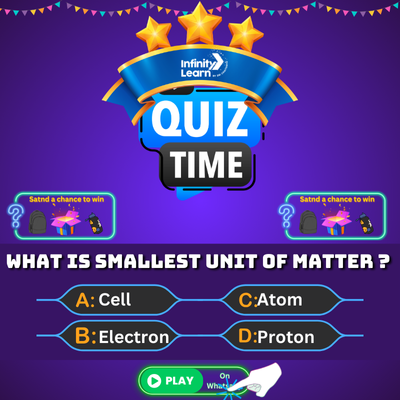We have compiled a set of MCQ questions for the Class 8 English Geography lesson, along with answers. These questions are designed to help develop essential skills and enhance problem-solving abilities. Being familiar with the concepts and facts will boost your self-confidence and is crucial for assessing your knowledge. Practicing these MCQs for Class 8 English will ease any concerns you might have and contribute to achieving better results.
The Geography Lesson MCQ questions with answers in this online test will significantly improve the confidence of students. It will also teach you how to approach and solve questions that some may find challenging.
MCQs on Class 8 English Chapter 2 Geography Lesson
Class 8 English students should refer to the following multiple-choice questions with answers for Chapter 2 Geography Lesson in Class 8.
- Who is the poet of the lesson “Geography Lesson”?
- a) Robert Frost
- b) Kenneth Grahame
- c) Zulfikar Ghose
- d) Ted Hughes
Answer: c) Zulfikar Ghose
- What is the central theme of the poem “Geography Lesson”?
- a) Global warming
- b) The beauty of nature
- c) The importance of maps
- d) The insignificance of human conflicts compared to the vastness of the Earth
Answer: d) The insignificance of human conflicts compared to the vastness of the Earth
- In the poem, how is the Earth depicted?
- a) A small planet
- b) A place of natural beauty
- c) A big, cold, and indifferent planet
- d) A world of endless wars
Answer: c) A big, cold, and indifferent planet
- What was the poet’s reaction to the aerial view of the Earth?
- a) Fascinated by its beauty
- b) Shocked by the smallness of human conflicts
- c) Surprised by its vastness
- d) Disappointed with the lack of natural beauty
Answer: b) Shocked by the smallness of human conflicts
- What does the poet compare the Earth to in the poem?
- a) A massive ball of fire
- b) A cold marble
- c) A living being
- d) A beautiful garden
Answer: b) A cold marble
- The poem “Geography Lesson” gives a message about:
- a) The importance of physical geography
- b) The insignificance of human conflicts in comparison to the Earth
- c) The beauty of human progress
- d) The role of maps in understanding history
Answer: b) The insignificance of human conflicts in comparison to the Earth
- In the poem, the poet reflects on which type of view of the Earth?
- a) A birds-eye view
- b) A satellite view
- c) A view from the ground
- d) A view from space
Answer: d) A view from space
- What is the poet’s observation about the boundaries between countries from the sky?
- a) They are clearly visible
- b) They are invisible
- c) They are marked by rivers
- d) They are marked by mountains
Answer: b) They are invisible
- What does the poet say about human history and conflicts?
- a) They seem more significant from above
- b) They seem smaller and less important
- c) They are non-existent
- d) They seem as large as the Earth
Answer: b) They seem smaller and less important
- What is the main message of “Geography Lesson”?
- a) The Earth is a beautiful place to live in
- b) Humanity’s struggles and conflicts are tiny in comparison to the Earth
- c) Geography shapes our identities
- d) We should care about the Earth’s geographical features
Answer: b) Humanity’s struggles and conflicts are tiny in comparison to the Earth
- What is the poet’s feeling towards the Earth’s view from above?
- a) Awe and amazement
- b) Indifference
- c) Fear and sadness
- d) Confusion
Answer: a) Awe and amazement
- The poem “Geography Lesson” encourages readers to:
- a) Study maps
- b) Understand the vastness of the Earth
- c) Travel the world
- d) Focus more on geographical boundaries
Answer: b) Understand the vastness of the Earth
- What feature of the Earth is highlighted in the poem?
- a) The oceans and mountains
- b) The borders of countries
- c) The natural disasters
- d) The smallness of human conflicts
Answer: d) The smallness of human conflicts
- How does the poet view the concept of human wars and borders?
- a) As highly significant
- b) As a part of nature
- c) As insignificant and petty
- d) As something to be proud of
Answer: c) As insignificant and petty
- Which of the following best describes the tone of the poem “Geography Lesson”?
- a) Optimistic
- b) Sarcastic
- c) Reflective and philosophical
- d) Humorous
Answer: c) Reflective and philosophical
- What does the poet realize from the aerial view of the Earth?
- a) That the Earth is divided into many small regions
- b) That nature is more beautiful than human-made creations
- c) That human actions seem insignificant on such a large scale
- d) That borders should be eliminated
Answer: c) That human actions seem insignificant on such a large scale
- What type of imagery is used in the poem?
- a) Natural imagery
- b) Geographical imagery
- c) Political imagery
- d) Visual imagery of space
Answer: d) Visual imagery of space
- What is the poet’s perception of human-made maps?
- a) They are accurate
- b) They are important for navigation
- c) They are meaningless compared to the Earth’s vastness
- d) They help in understanding history
Answer: c) They are meaningless compared to the Earth’s vastness
- In the poem, the Earth’s response to human struggles is:
- a) Indifference
- b) Appreciation
- c) Anger
- d) Apathy
Answer: a) Indifference
- What do the “red and blue borders” in the poem symbolize?
- a) Countries with wars
- b) Human divisions and boundaries
- c) Peaceful countries
- d) Areas of geographical interest
Answer: b) Human divisions and boundaries
- What does the poet imply about human history?
- a) It is full of victories
- b) It is full of struggles that do not matter in the grand scheme of things
- c) It is important in shaping the Earth
- d) It is insignificant compared to other histories
Answer: b) It is full of struggles that do not matter in the grand scheme of things
- Which of these phrases best sums up the central idea of the poem?
- a) Human history is eternal
- b) Earth’s vastness dwarfs human conflicts
- c) Maps are essential to understanding geography
- d) We should fight for our boundaries
Answer: b) Earth’s vastness dwarfs human conflicts
- The poet of “Geography Lesson” seems to have a:
- a) Positive outlook on humanity
- b) Sense of disillusionment
- c) Strong nationalistic view
- d) Sense of wonder at nature
Answer: b) Sense of disillusionment
- What do the aerial views of the Earth make the poet feel?
- a) Proud of human achievements
- b) Insignificant in comparison to the Earth
- c) Inspired to travel
- d) Sad about Earth’s condition
Answer: b) Insignificant in comparison to the Earth
- In the poem, the Earth is described as:
- a) A living entity
- b) A beautiful world full of life
- c) Cold and indifferent
- d) A battlefield
Answer: c) Cold and indifferent
- The poem encourages people to:
- a) Take pride in human achievements
- b) Understand the planet’s grandness and our smallness
- c) Focus on national boundaries
- d) Strive for political control
Answer: b) Understand the planet’s grandness and our smallness
- What does the aerial view show about the concept of borders?
- a) They are large and prominent
- b) They are not visible from a higher perspective
- c) They are the most important aspect of the Earth
- d) They define the Earth’s geography
Answer: b) They are not visible from a higher perspective
- What feeling does the poet express regarding human wars and conflicts?
- a) They are important to preserve
- b) They seem trivial compared to the Earth’s vastness
- c) They are necessary for progress
- d) They are inevitable
Answer: b) They seem trivial compared to the Earth’s vastness
- What role do maps play in the poem?
- a) To show geographical beauty
- b) To highlight the importance of countries
- c) To reflect human-made divisions
- d) To help us understand the Earth’s history
Answer: c) To reflect human-made divisions
- The poem “Geography Lesson” gives a lesson in:
- a) Political geography
- b) Physical geography
- c) The insignificance of human borders in the context of the Earth
- d) The importance of global politics
Answer: c) The insignificance of human borders in the context of the Earth




